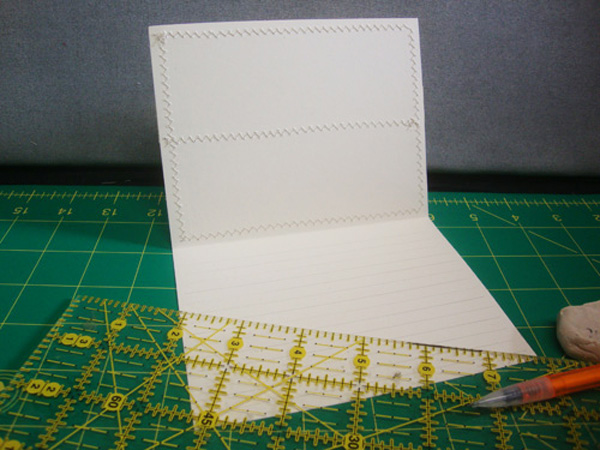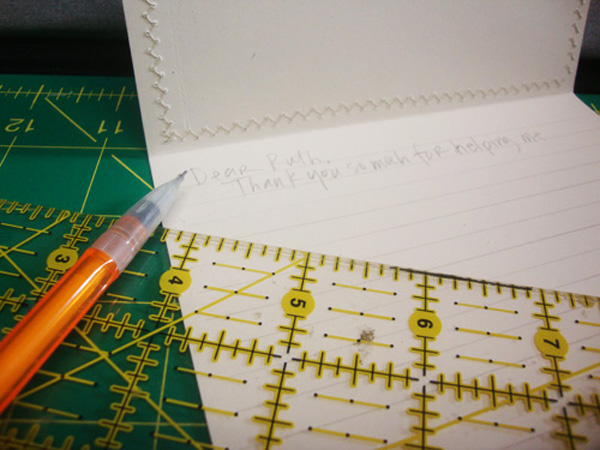Warning: (Written AFTER I composed this post 🙂 With all the concerns in the world – disaster, earthquakes, political upheaval, hunger, unemployment and much, much more – this is an absolutely trivial rant that was most entertaining to myself to write, but if solving world problems is on the top of your list today, DON’T BOTHER TO READ!
I am not a perfectionist per se**. My motto reflects a description of Mary Poppins…simply to be “practically perfect in every way!” I will claim “planned imperfection” as my way of “keeping it real”! But there are certain things that drive me crazy…about myself and the way I do things – it’s totally a personal thing, meaning that I do not have the same set of standards towards anyone else’s manner of doing things. What bothers me about my imperfection does not bother me about someone else…personal standards are just that: personal! There are reasons of expedience and necessity for which the world has evolved and developed a number of conveniences like sliced bread, Kleenex and for today’s rant, lined paper. Can you imagine teachers assigning our kids homework and then trying to read a sentence as it travels all over the page? It would have been that way for my teachers without lines on my notebook paper! Lined, or ruled paper is one of those modern conveniences that we probably take entirely for granted. Until we try to do without it.
I have developed fairly good handwriting over the years. I think it started with my elementary school teachers expectations that do not seem to be as high a priority in schools these days. With the availability of computers and printers, teachers are requiring their students to turn in most of their assignments typed. Heaven forbid that either should break or the power goes out! Legible handwriting seems to almost be a thing of the past.
I have always had nice, even pretty, easily read handwriting. When I started scrapbooking, my handwriting took a turn to the artistic. While my handwriting has change little, my printing changes frequently or according to my mood. People, or maybe I should say women (because men don’t seem to care as much about their scribbles – an appropriate word, don’t you think?) frequently complain about their handwriting. I try to explain that it is like anything else, and perhaps easier than most other acquired skills – practice is a required element of success. Having a grand piano doesn’t make one a concert pianist. Picking up a pen or pencil doesn’t make your handwriting legible or interesting. Forming alphabet letters is not hard, but there are so many different styles that it does become a decision-making process. A desire to improve is the main ingredient to becoming accomplished. Find someone’s handwriting that you like and make it work for you. Keep a notebook around and when you are waiting in the car or need to write yourself a note, try forming your letters differently until you find one you can do easily – it will come naturally with a little investment of time. Of course, you should not dismiss the quality of your content – it is more pleasant if you write something worth reading.
So, I got the nice handwriting part down. I am, however, terrible when it comes to writing on blank paper! Because most of the note cards I make (and I rarely buy note cards) do not include lined paper, I struggle to keep the text from traveling uphill or downhill. The bigger the card, the worse it becomes. I can’t stand the disorderly look on the paper. The imperfection needs to be planned by me for me to be happy. I do have a solution, but I am not the first person to do this or figure it out, of that I can be sure.
When I got a calligraphy kit, I noticed that the practice paper was fairly translucent and there was a sheet of lined paper that you would put behind the practice paper to use as a guide for the height of the upper and lower case letters, as well as a sheet of alphabet letters that you could trace, with arrows on how the letters should be formed. Most of the paper I use to make my cards is cardstock and not translucent at all. But having the lined paper gave me the idea that you could pencil in lines to use as a guide. When doing your final writing, you need to use a permanent or pigment ink pen so that the ink doesn’t smear. It’s always best to test your ink’s non-smearing quality before you actually use this method. It doesn’t work as well on slick or shiny surfaces. But porous papers usually work fine. Once you’re done, wait a minute, then use a white eraser to remove the pencil marks.


So, before the day is gone, I will get on with my tip. I use a quilting ruler to measure my lines. This is one of my favorite tools. It has lots of lines and a well-marked grid to follow. If I need to write a longer note, I use a 1/4″ space. Starting at the bottom, I line up the ruler with the bottom of the paper and make a light pencil line, 1/4″ up from the bottom. Working my way up, I continue marking the lines, leaving a slightly bigger space at the top. Take care not to get off the mark even slightly or you will find your lines slanting a lot by the time you get to the top.
If I am trying to make it a quick note, that is the end of my penciling in. But if I am feeling a little scattered or am trying to fit a lot in a little space, I will sometimes pencil in the text as well. As far as your printing or writing goes, don’t worry about perfection in their formation as you go. I basically use this for spacing purposes. The reason I do this is because I hate it when I have created a pretty card and then I misspell a word or leave one out…or just totally mess up and write something dumb or improperly worded. I can’t seem to write as fast as I think…isn’t it that way for most people? Part of the problem stems from doing so much writing on the computer, having it tell me that I haven’t spelled something correctly, used proper grammar and then being able to edit when I am done. I am out of practice when it comes to doing more handwritten documents. I better get back to that Brain Age game my kids gave me a few Christmas’ ago…but I have to remember to charge it first so I can use it!
This whole post stemmed from me trying to write nice-looking, neat and tidy thank you notes. I have seriously digressed!*** But this has been a fun, educational trip around the Internet and my wandering brain. Now back to the process that got me started on this journey…writing those darn thank-yous!
Footnotes: This is partly why it takes me so long to post – I like to check things out, especially my words and phrases!
*toe the line: to position one’s toes next to a marked line in order to be ready to start a race, or some other undertaking. For me, I am positioning my words so that the reader can readily go onto the next line of text. For a history of the phrase, click on the link.
**per se: “through itself”. Also “by itself” or “in itself”. Without referring to anything else, intrinsically, taken without qualifications, etc…I hope I am using it correctly, because I use it frequently. I found that it is attached to legal terms, but I think, after research, that the definition of “essentially” or the synonym “fundamentally” is probably the best fitting my usage.
According to dictionary.com –
| As per Main Entry: | per se |
| Part of Speech: | adverb |
| Definition: | essentially |
| Synonyms: | alone, as such, by and of itself, by definition, by its very nature, by itself, fundamentally, in essence, in itself, independently, intrinsically, of itself, singularly, solely, virtually |
Copyright © 2010 by the Philip Lief Group.
***di·gress
dih-gres,
–verb (used without object)
Tags: good handwriting tricks, nice handwriting tips, penmanship, techniques for neat handwritten notes, Toe the line

















